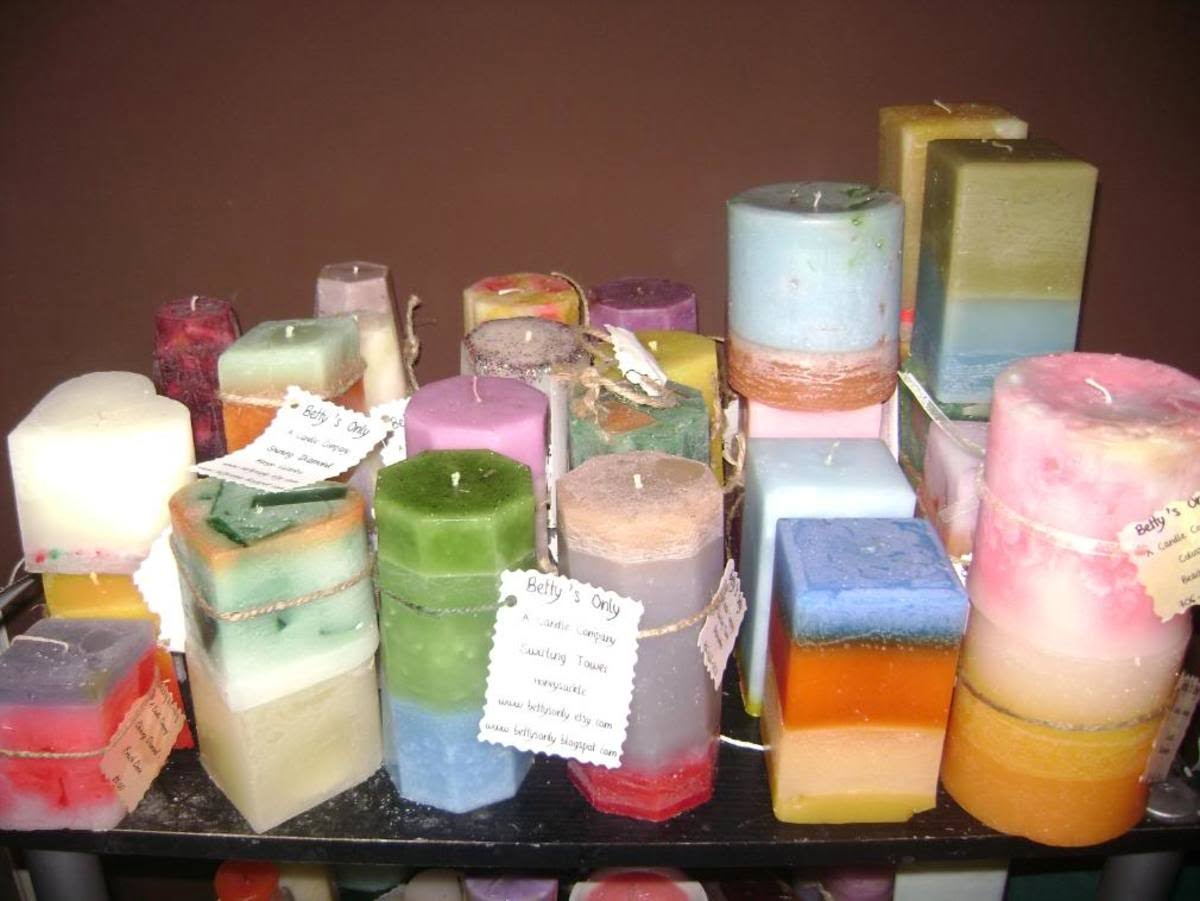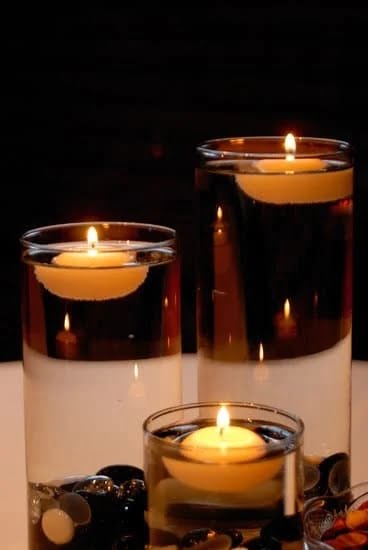Candle making is not just an art form, but also a science. Every aspect of the process, from selecting the wax to choosing the wicks, plays a crucial role in creating the perfect candle. One key element often overlooked is the choice of oils used for fragrance and scent.
The oils used can greatly influence the final product, determining its scent throw, burn time, and overall quality. In this article, we will explore which oils are best for candle making and why selecting the right ones is essential.
When it comes to candle making, fragrance oils are at the center of attention. They are specially formulated scents designed to enhance your candles and create a captivating ambiance. Whether you want your candles to smell like fresh flowers or warm spices, selecting high-quality fragrance oils is vital in achieving the desired result. We will delve into the art of using fragrance oils effectively and discuss how they contribute to the overall sensory experience of your candles.
In addition to fragrance oils, essential oils also play a significant role in candle making. Derived from plants through various extraction methods, essential oils offer not only beautiful scents but also therapeutic benefits. We will uncover some of the top essential oils that can be used in candle making to create unique and alluring scents that uplift mood and promote relaxation.
As we journey through this article, we will also take a closer look at carrier oils – another important component in candle making. Carrier oils act as vehicles for fragrances or essential oils and help disperse them evenly throughout the wax when melted. By understanding different types of carrier oils and their specific properties, you can ensure that your chosen fragrances or essential oil blends are distributed effectively in your candles.
Choosing the right oils for candle making can make all the difference between an ordinary candle and one that stands out with its mesmerizing aroma and long-lasting burn time. With our comprehensive guide on which oils are best for candle making, you will gain valuable insights to create unique and captivating candles that fill any space with delightful scents and soothing ambiance.
The Art of Scent
Fragrance plays a crucial role in the overall experience of a candle. Not only does it help create an inviting atmosphere, but it also has the power to evoke emotions and memories. That is why choosing the right fragrance oil is essential for candle makers. Here, we will explore the significance of fragrance oils in candle making and provide some popular options to consider.
Fragrance oils are synthetic or natural oils that are specifically formulated to emit a pleasing scent when used in candles. They are made up of a mixture of aromatic compounds, which can include both natural and synthetic ingredients. The advantage of using fragrance oils over essential oils is that they offer a wider variety of scents since they can be created to mimic almost any aroma.
When selecting fragrance oils for your candles, it’s important to consider both personal preference and market demand. Popular fragrance categories include floral, fruity, fresh/clean, spicy, and woody scents. Some widely loved fragrance oil options include lavender for its calming properties, vanilla for its warm and comforting scent, citrus for its refreshing qualities, and sandalwood for its earthy and exotic aroma.
To further enhance the appeal of your candles, you may also experiment with creating unique scent combinations by blending different fragrance oils together. This can result in captivating aromas that set your candles apart from others on the market. Consider creating an “aroma menu” to showcase these custom blends to your customers or clients.
Popular Fragrance Oils for Candle Making
- Lavender
- Vanilla
- Citrus (such as lemon or orange)
- Sandalwood
Essential Oils 101
Essential oils are highly concentrated plant extracts that are renowned for their aromatic properties. These oils play a crucial role in candle making as they impart fragrance and enhance the overall experience of burning a candle. In this section, we will delve into the top essential oils that are commonly used in candle making to create captivating scents.
Lavender Essential Oil
Lavender essential oil is a staple in many candle maker’s collections due to its versatile and soothing aroma. It is known for its calming properties and is often used to promote relaxation and better sleep. Adding lavender essential oil to your candles can create a serene and tranquil ambiance, perfect for winding down after a long day.
Peppermint Essential Oil
Peppermint essential oil is another popular choice for candle making, thanks to its invigorating and refreshing scent. The cool and minty aroma of peppermint can uplift the atmosphere of any space, making it an excellent choice for creating candles that help boost focus and energy. Additionally, peppermint oil has been linked to benefits such as stress relief and improved mood.
Citrus Essential Oils
Citrus essential oils, including orange, lemon, and grapefruit, bring a bright and uplifting fragrance to candles. These oils possess energizing properties that can instantly elevate the mood in any room. Citrus scents are particularly well-suited for creating candles during the warmer seasons or whenever you want to infuse your space with a burst of freshness.
Vanilla Essential Oil
The warm and comforting aroma of vanilla essential oil has made it one of the most beloved choices for candle making. Its sweet and creamy scent creates an inviting atmosphere. Vanilla essential oil pairs well with various other fragrances, such as floral or fruity notes, allowing you to experiment with different combinations to create unique scents.
Unlocking the Secrets of Carrier Oils
Understanding Carrier Oils
When it comes to candle making, selecting the right carrier oil is crucial. Carrier oils, also known as base oils, are used to dilute the essential or fragrance oils and help them blend well with the wax. These oils carry the scent throughout the candle and aid in its even distribution when burning. They play a vital role in determining the overall quality and performance of your candles.
Popular Carrier Oils for Candle Making
There are various carrier oils available, each with its own unique characteristics that can enhance your candle-making experience. Here are a few popular options to consider:
- Soybean Oil: Known for its clean burn and excellent fragrance throw, soybean oil is considered one of the best carrier oils for candle making. It has a low melting point, which allows for a longer-lasting and more consistent burn time.
- Coconut Oil: With its high saturation levels, coconut oil produces a strong scent throw and provides an excellent hot scent release. It also gives candles a smooth finish and increases their durability.
- Apricot Kernel Oil: This lightweight oil is perfect for creating highly-scented candles as it has good absorbency properties. It blends well with essential oils and helps maintain their aromatic qualities.
- Jojoba Oil: Known for its long shelf life, jojoba oil is often used in luxury candles due to its moisturizing properties. It provides a creamy texture to the final product and helps prevent cracking or frosting during cooling.
Factors to Consider
When selecting carrier oils for your candles, there are several factors to keep in mind:
- Melting Point: Consider the melting point of the carrier oil as it affects how well it combines with the wax and ensures an even burn.
- Scent Throw: Some carrier oils have better scent throw capabilities than others. Choose an oil that can help release the fragrance effectively and evenly.
- Compatibility: Ensure that the carrier oil you choose blends well with both the wax and the fragrance or essential oils you plan to use.
- Sustainability: Consider using carrier oils derived from sustainable sources to minimize environmental impact.
By understanding the properties of different carrier oils and considering these factors, you can select the best options for your candle-making projects. Experimenting with various combinations can lead to unique and captivating scents that will delight your customers or enhance your own home ambiance.
The Power of Blending
Blending different oils is a crucial aspect of candle making as it allows artisans to create unique and alluring scents. The right combination of oils can enhance the ambiance of any space and evoke specific moods or emotions. Here are some tips for mastering the art of oil combinations:
- Understand scent profiles: Before blending oils, it’s essential to have a solid understanding of their scent profiles. Each oil has its own distinct aroma, from floral and fruity to woody and earthy. By knowing how each oil smells individually, you can begin to imagine how they might work together to create a harmonious fragrance.
- Start with a base note: When creating a blend, it’s helpful to start with a base note oil. Base notes are deep and long-lasting scents that anchor the fragrance. Good examples include sandalwood, vanilla, or patchouli. They provide a stable foundation for the other oils in your blend.
- Add middle and top notes: Once you have your base note, you can complement it with middle and top notes to add complexity and dimension to the fragrance. Middle notes offer balance and can include oils like lavender, rosemary, or chamomile. Top notes are the first scents that are detected when a candle is burned and tend to be lighter and more volatile. Examples include citrus oils like lemon or bergamot.
- Experiment and take notes: Don’t be afraid to experiment with different combinations of oils until you find the perfect blend. Keep track of your recipes by taking detailed notes on measurements used for each oil in your blends, noting any adjustments made along the way.
6Considerations for Candle Makers:
When blending oils for candles, there are several considerations to keep in mind:
- Candle type: Different types of candles may require specific considerations when choosing oil blends. For example, soy wax candles may require stronger-scented essential oils compared to paraffin wax candles. It’s important to test different blends and check the compatibility with your chosen candle type.
- Candle size and room size: The size of the candle and the room it will be placed in should also be considered when blending oils. A larger candle or a larger room may require a stronger fragrance. On the other hand, smaller spaces or tea light candles may need milder fragrances.
- Personal preference: Ultimately, the goal is to create scents that you enjoy and that resonate with your target audience. Consider personal preferences, market trends, and customer feedback when deciding on oil combinations for your candles.
By mastering the art of blending oils, candle makers can create captivating fragrances that appeal to their customers’ olfactory senses. With experimentation and attention to detail, unique and alluring scents can be achieved, setting their candles apart from others in the market.
Considerations for Candle Makers
When it comes to choosing oils for different types of candles, candle makers need to consider several factors in order to create the desired outcome. The type of wax being used, the intended purpose of the candle, and personal preferences all play a role in selecting the right oils.
One important factor to consider is the flash point of the oil. The flash point is the temperature at which an oil can ignite when exposed to an open flame. Different oils have different flash points, so it’s crucial to choose oils with a flash point higher than the melting point of the wax being used. This ensures that the oil will not catch fire and cause safety hazards during burning.
Another consideration is the scent throw of the oil. Scent throw refers to how far and strong a fragrance travels when the making-mineral-oil-in-candle-wax/” target=”_blank” rel=”follow noopener”>candle is lit. Some oils have stronger scent throws than others, so candle makers should take into account whether they want a subtle or intense aroma in their candles. For example, essential oils generally have a stronger scent throw compared to fragrance oils.
The compatibility of oils with different types of wax is also an important factor. Some oils mix well with soy wax, while others are better suited for paraffin or beeswax. It’s crucial for candle makers to research and test various combinations to achieve optimal results.
In summary, considerate selection of oils for different types of candles involves taking into account factors such as flash point, scent throw, and compatibility with specific waxes. By carefully considering these factors, candle makers can ensure that their candles not only look beautiful but also emit captivating scents when lit.
| Consideration | Factors |
|---|---|
| Flash Point | Temperature at which an oil can ignite when exposed to an open flame. |
| Scent Throw | How far and strong a fragrance travels when the candle is lit. |
| Compatibility with Wax | Ability of the oil to mix well with specific types of wax. |
Dive into Distillation
The process of steam distillation plays a crucial role in the production of many candle making oils. Steam distillation is a method of separating volatile compounds from plants or other organic materials through the use of steam. This technique allows for the extraction and concentration of essential oils, which are widely used in candle making.
During steam distillation, plant material is placed in a still and heated with steam. As the steam passes through the plant material, it vaporizes the volatile compounds, including essential oils. The steam and vapor then travel through a condenser, where they are cooled and condensed back into liquid form. The resulting mixture is then separated into water and oil phases, with the oil phase containing the concentrated essential oils.
The quality and composition of the essential oils extracted through steam distillation can vary depending on various factors such as the type of plant material used, its maturity, and even the weather conditions during growth. These variables can influence not only the scent but also the therapeutic properties of the resulting oils. Therefore, it is important for candle makers to source their essential oils from reputable suppliers to ensure consistent quality.
| Plant Material | Oil Yield (Approximate) |
|---|---|
| Lavender | 1-3% |
| Peppermint | 0.1-1% |
| Eucalyptus | 1-2% |
In candle making, essential oils obtained through steam distillation are highly valued due to their concentrated scent profiles. These oils provide natural fragrances that can enhance any candle’s aroma and create unique blends when combined with other essential oils or fragrance oils. Additionally, the therapeutic properties of essential oils add an extra dimension to candles, providing potential benefits such as stress relief, relaxation, and improved mood.
Overall, understanding the process of steam distillation and its relation to candle making oils is essential for candle makers who want to create high-quality and captivating scents. By selecting carefully distilled essential oils, candle makers can ensure that their candles not only emit delightful fragrances but also offer potential aromatherapy benefits.
The Natural Advantage
Natural oils offer a multitude of benefits when it comes to candle making. Not only do they provide a natural and eco-friendly alternative to synthetic fragrances, but they also bring unique and therapeutic properties to your candle creations. Harnessing the benefits of natural oils can elevate your candles, making them truly special and captivating.
One of the primary advantages of using natural oils in candle making is the aromatherapy component they bring. Certain essential oils, such as lavender or citrus scents, are known for their ability to promote relaxation and stress relief. By incorporating these oils into your candles, you can create a soothing atmosphere that helps to calm the mind and body.
Additionally, natural oils offer a wider variety of scents compared to synthetic fragrance oils. With natural options ranging from floral and herbal notes to woody and earthy aromas, you have the opportunity to create unique scent combinations that cannot be replicated with synthetic alternatives. This allows you to tailor your candles to different moods or occasions, ensuring each one is truly one-of-a-kind.
When working with natural oils, it is important to consider their individual properties and how they may affect the quality of your candles. For instance, some oils have low flash points, meaning they may not perform well in hot climates or with certain types of wicks. It is vital to research and experiment with different oils to find the ones that work best for your specific needs.
Beyond the Basics
When it comes to candle making, there are a plethora of oils to choose from beyond the traditional fragrances and essential oils. Exploring unconventional yet effective oils can help you create unique and captivating scents for your candles. These oils offer a fresh twist to traditional candle making and can be a game-changer for experienced candle makers looking to push the boundaries of their craft.
One unconventional oil that you may consider using in your candle making is coffee oil. Coffee oil has a rich and deep aroma that adds a unique dimension to your candles. It can evoke feelings of warmth, comfort, and energy, making it perfect for creating cozy and inviting atmospheres. Coffee oil pairs well with warm scents like vanilla or cinnamon, adding depth and complexity to your creations.
Another unconventional oil that can be used in candle making is herbal-infused oils. These oils are made by infusing carrier oils with various herbs such as lavender, rosemary, or chamomile. The result is a subtle yet refreshing scent that brings the natural world into your candles. Herbal-infused oils are versatile and can be used on their own or blended with other essential oils to create custom scents tailored to your preferences.
Lastly, woodsy scents have become increasingly popular in candle making, and one unconventional yet effective oil in this category is cedarwood oil. Cedarwood oil has a warm and earthy fragrance that brings the outdoors inside your home. It adds a touch of elegance and sophistication to your candles while providing a grounding effect. Cedarwood oil blends well with citrusy or floral notes for a more complex scent profile.
Exploring these unconventional yet effective oils opens up endless possibilities for creating unique and captivating candles. Don’t be afraid to experiment with different combinations or even create your own signature scent using these unorthodox choices. The key is finding the right balance between traditional fragrances and these unconventional oils to create truly remarkable candles that stand out from the crowd.
Troubleshooting and Tips
In conclusion, working with different oils for candle making can present its fair share of challenges. However, with the right knowledge and expertise, these obstacles can be overcome to create beautiful and captivating candles. This section has provided valuable tips and expert advice on troubleshooting common issues that may arise during the process.
One of the key challenges when working with oils in candle making is achieving the desired scent strength. It is important to note that not all oils have the same level of potency, and finding the right balance can be a trial-and-error process.
To enhance the scent throw of your candles, consider using fragrances specifically designed for candle making or experimenting with different ratios of essential oils. Additionally, allowing your candles to cure for a sufficient amount of time after pouring can improve their overall scent performance.
Another common challenge is ensuring proper oil compatibility with different types of waxes. Each type of wax has its own melting point and characteristics that can influence how well it blends with certain oils. To avoid issues such as fragrance separation or poor scent diffusion, it is crucial to thoroughly research which oils are best suited for the specific wax you are using. Conducting small test batches before committing to larger quantities can save time, money, and potential disappointment.
Lastly, maintaining proper safety measures when working with oils cannot be stressed enough. Some fragrance oils contain components that may accelerate burning or affect the stability of a candle’s core structure. Taking precautions such as wearing gloves and protective clothing can minimize potential risks during both the mixing and pouring stages. Furthermore, always follow manufacturer guidelines for usage rates when adding oils to your candles to prevent any unintended consequences.
By being aware of these common challenges and implementing expert tips and advice, you can navigate through any hurdles encountered while working with oils in candle making. With perseverance and a bit of creativity, you will be able to create enchanting and unique scents that bring joy to those who experience your handmade candles.

Welcome to my candle making blog! In this blog, I will be sharing my tips and tricks for making candles. I will also be sharing some of my favorite recipes.





